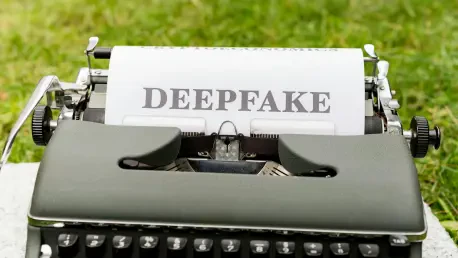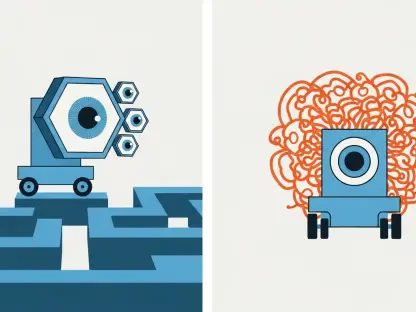In a digital age where a single image can be weaponized to ruin reputations or incite violence, the battle against deepfake technology has never been more urgent, and we must act swiftly to protect society. Picture a world where a fabricated video of a public figure spreads like wildfire, sparking chaos before anyone can verify its authenticity. With AI tools now accessible to anyone with a smartphone, malicious content creation has surged, leaving individuals and authorities scrambling for solutions. Amid this crisis, a groundbreaking innovation emerges from a collaboration between Monash University and the Australian Federal Police (AFP), promising to turn the tide against digital deception.
A Digital Shield Against Deceptive Threats
The rise of deepfake images and videos represents one of the most insidious challenges of modern technology. These AI-generated forgeries can convincingly mimic real people, often used to spread misinformation, exploit personal privacy, or worse, create harmful explicit content. The sheer speed at which such material can be produced and shared online amplifies its destructive potential, making traditional detection methods struggle to keep pace.
This is where Silverer, a pioneering AI tool, steps in as a digital guardian. Developed through a partnership focused on leveraging technology for safety, Silverer offers a proactive defense by disrupting the very processes that enable deepfake creation. Its arrival marks a significant shift in how society can protect itself from the darker side of AI advancements, providing hope for both individuals and law enforcement agencies overwhelmed by the scale of the problem.
The Alarming Surge of AI-Driven Malice
Cybercriminals have seized upon the accessibility of AI, using open-source software to craft deepfake content with chilling precision. The AFP has documented a sharp increase in AI-generated explicit material, often targeting vulnerable populations and flooding online spaces with fabricated abuse imagery. This trend not only harms individuals but also burdens investigators who must distinguish between real and fake evidence in an ever-growing sea of digital noise.
Beyond personal harm, the implications ripple outward to public safety. Deepfake propaganda has been used to manipulate opinions, incite unrest, and undermine trust in institutions, with cases reported globally of falsified videos swaying political narratives. The urgency to address this multifaceted threat underscores the critical need for innovative tools that can outsmart the technology being exploited by bad actors.
Silverer’s Innovative Battle Plan Against Deepfakes
At the heart of Silverer’s strategy lies a technique known as “data poisoning,” a clever method to sabotage AI models before they can produce harmful content. By subtly altering the pixels of images, Silverer ensures that any attempt to manipulate or generate new content from these files results in distorted, unusable outputs—think blurry faces or unrecognizable shapes. This disruption renders the data worthless to criminals seeking to create convincing forgeries.
What sets Silverer apart is its dual impact: it not only prevents the creation of malicious deepfakes but also aids authorities in identifying tampered content more efficiently. Early testing, conducted under controlled environments, has shown promising results, with manipulated outputs failing to achieve the realism needed for deception. As development progresses from 2025 onward, the potential to scale this technology could redefine digital forensics and online safety protocols.
Insights from the Pioneers Behind the Tool
Experts driving Silverer’s creation offer a candid view of its role in the fight against digital crime. AFP Commander Rob Nelson describes the tool as akin to “speed bumps on an illegal drag racing strip,” acknowledging that while it may not halt offenders completely, it significantly slows their progress. This analogy highlights the pragmatic approach taken by law enforcement in embracing incremental but impactful solutions.
Project Lead Elizabeth Perry sheds light on the tool’s evocative name, drawing from the concept of silver in mirrors that distort reflections. This metaphor captures Silverer’s essence—warping the “vision” of malicious AI systems to foil their intent. Meanwhile, Associate Professor Campbell Wilson from Monash University cautions that adaptability remains key, as cybercriminals often evolve tactics to bypass new defenses, emphasizing the need for relentless innovation in this space.
Practical Protection for Users and Authorities Alike
Silverer’s design extends beyond specialized use by investigators, aiming to empower everyday internet users with accessible safeguards. Plans are underway to develop a user-friendly version that allows individuals to “poison” their personal images before sharing them on social media, effectively shielding their data from being exploited in deepfakes. Such a feature could revolutionize how people manage their digital footprints in an era of rampant data misuse.
For law enforcement, the tool promises to lighten the load of sifting through vast quantities of fabricated content, enabling a sharper focus on genuine threats. Current efforts involve internal testing by the AFP to refine its application, with updates planned to counter emerging evasion techniques. This ongoing commitment to enhancement ensures that Silverer remains a relevant barrier against the shifting landscape of cybercrime, offering a layered defense for both public and private spheres.
Reflecting on a Path Forward
Looking back, the journey of Silverer stands as a testament to the power of collaboration between academia and law enforcement in tackling the perils of AI misuse. The tool’s development marked a pivotal moment in recognizing that reactive measures alone are insufficient against the rapid evolution of digital threats. Each stride made in testing and refining its capabilities highlighted a collective resolve to stay ahead of those exploiting technology for harm.
As the fight against deepfakes continues, the focus shifts toward broader adoption and public education on digital safety. Empowering users with tools like Silverer, alongside fostering awareness about data protection, emerges as vital next steps. Strengthening global partnerships to share innovations and strategies also becomes essential, ensuring that the battle against malicious content remains a unified front in safeguarding the integrity of the digital world.









